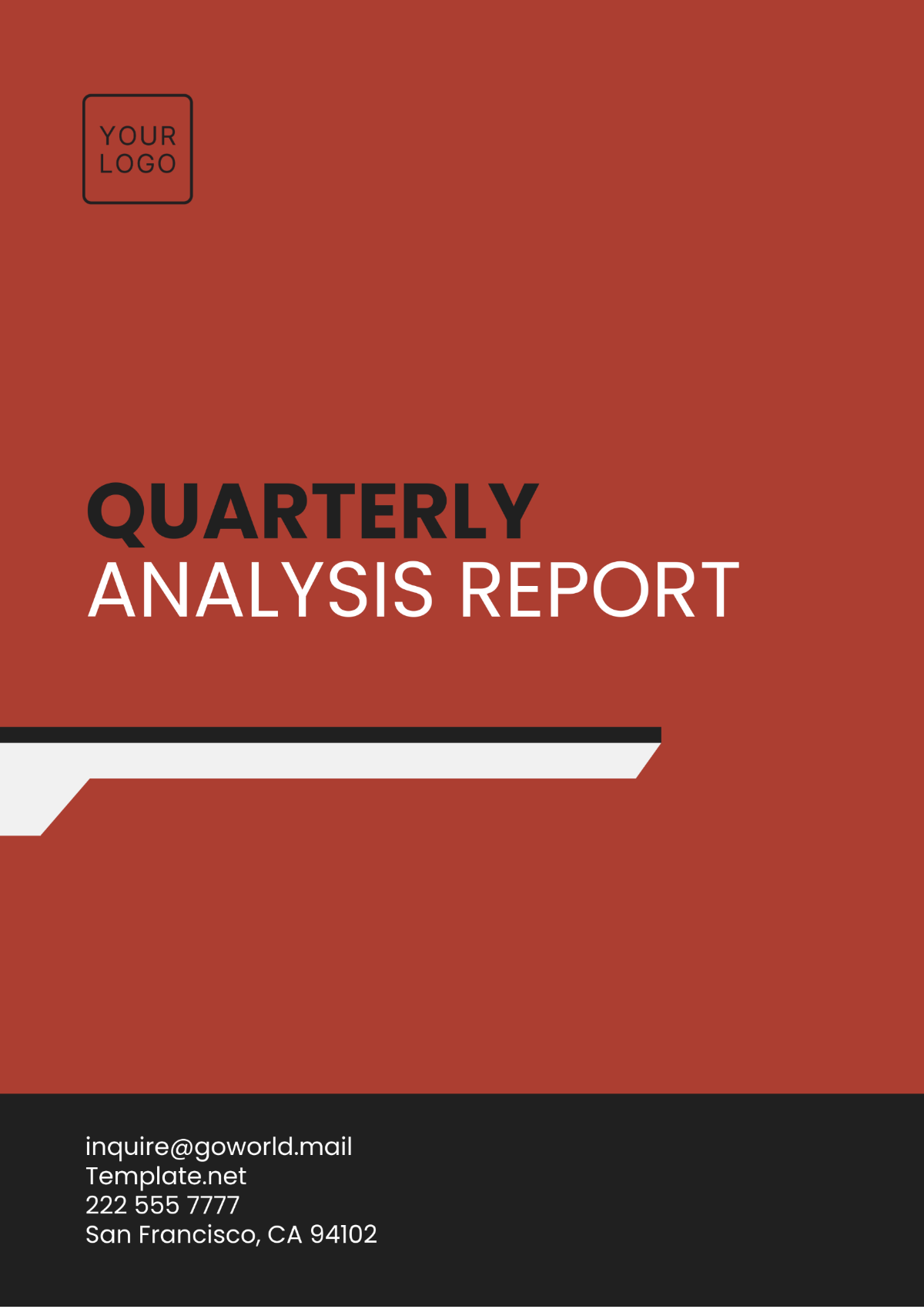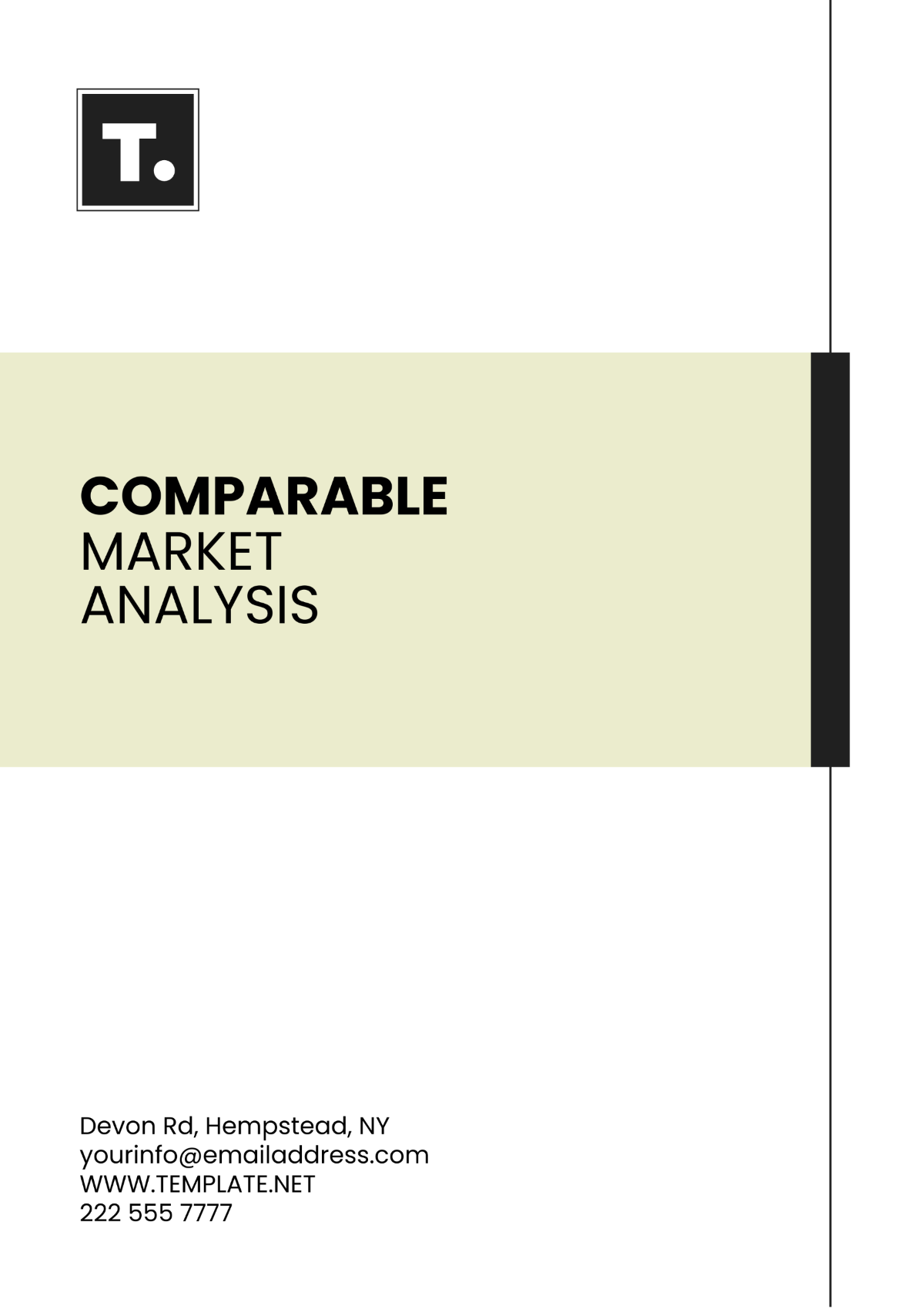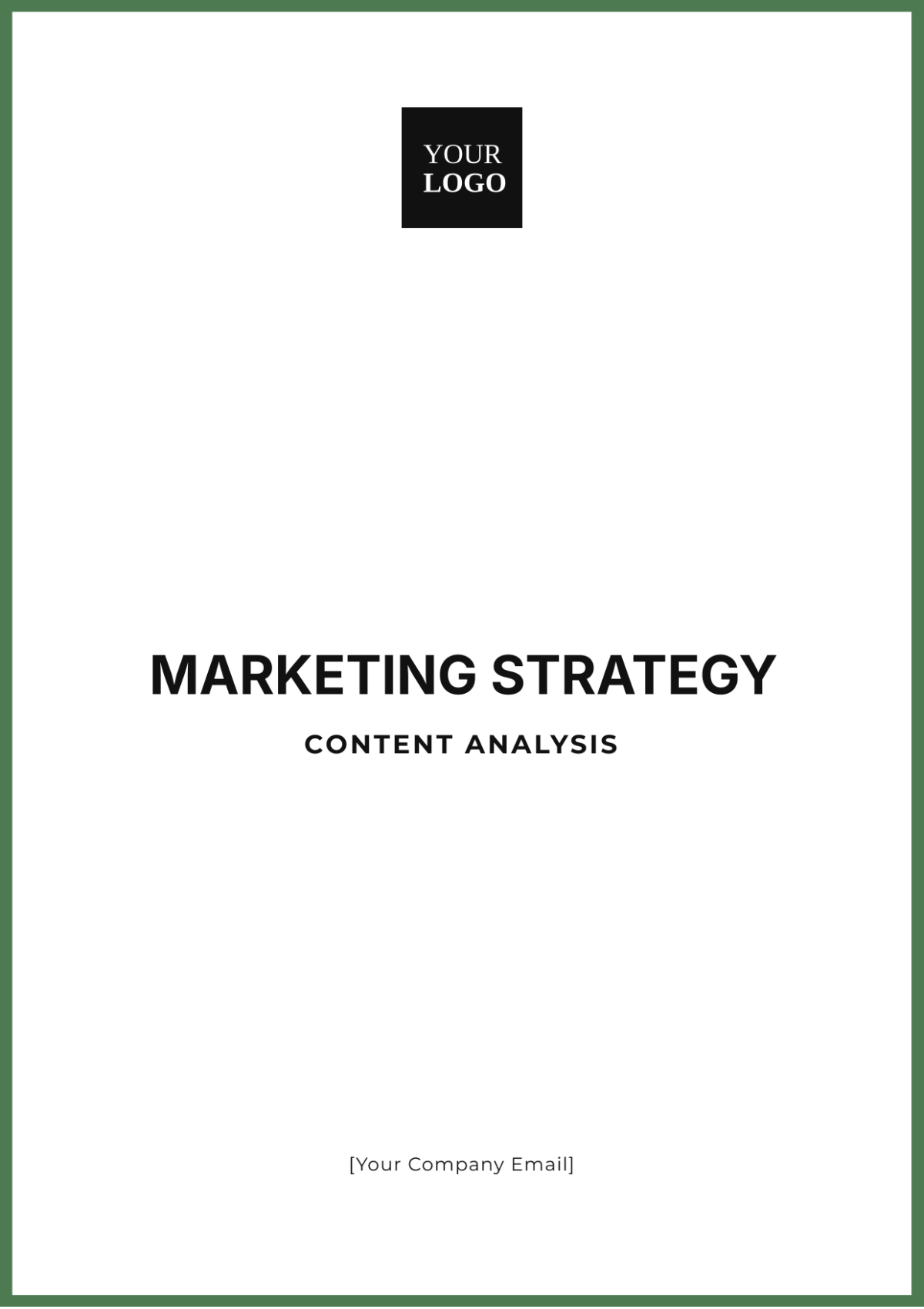Target Market Analysis Layout
I. Introduction
A. Overview
Purpose of the Analysis (Describe the objective of the target market analysis. Explain why understanding the target market is crucial for [Your Company Name]'s marketing strategy and business success. Include information about how this analysis will inform strategic decisions and influence marketing efforts.)
Scope of the Analysis (Outline the boundaries and scope of the analysis. Specify the aspects of the target market that will be covered, such as demographics, psychographics, geographic locations, and buying behaviors. Clarify any limitations of the analysis and what it does not cover.)
B. Importance of Understanding the Target Market
Strategic Planning (Discuss how knowledge of the target market aids in strategic planning. Explain how it helps in setting marketing goals, creating targeted campaigns, and positioning products or services effectively.)
Market Segmentation (Explain the concept of market segmentation and its relevance to the analysis. Detail how segmenting the market into different groups allows for more precise targeting and tailored marketing strategies.)
Competitive Advantage (Elaborate on how understanding the target market provides a competitive edge. Describe how insights into market trends, customer preferences, and behaviors can help [Your Company Name] outperform competitors.)
II. Market Research
A. Data Collection Methods
Primary Research (Detail the primary research methods used to gather data directly from potential customers. Include surveys, interviews, focus groups, and observations. Describe how each method contributes to understanding the target market.)
Secondary Research (Explain secondary research methods, which involve analyzing existing data. Include industry reports, market studies, academic journals, and online databases. Discuss how secondary research complements primary research.)
Data Analysis Techniques (Outline the techniques used to analyze collected data. Describe quantitative methods such as statistical analysis and qualitative methods such as thematic analysis. Explain how these techniques help in deriving actionable insights.)
B. Market Research Tools
Surveys and Questionnaires (Describe the use of surveys and questionnaires in collecting data. Explain how to design effective surveys, including question types, response scales, and sampling methods.)
Focus Groups (Explain how focus groups are used to gain in-depth understanding from a small group of participants. Detail the process of organizing focus groups, including participant selection and discussion facilitation.)
Interviews (Discuss the role of interviews in gathering detailed information from individual participants. Include types of interviews, such as structured, semi-structured, and unstructured, and their applications.)
Online Analytics Tools (List and describe online tools used for analyzing market data. Include web analytics platforms, social media analytics tools, and CRM systems. Explain how these tools provide insights into customer behavior and market trends.)
III. Market Segmentation
A. Demographic Segmentation
Age (Discuss how age affects consumer behavior and preferences. Explain the different age groups and their specific needs, preferences, and buying habits.)
Gender (Describe how gender influences purchasing decisions and product preferences. Include considerations for marketing strategies tailored to different genders.)
Income Level (Explain the impact of income on consumer purchasing power and behavior. Discuss how income segmentation helps in targeting products and services to different income brackets.)
Education Level (Discuss how education level affects consumer knowledge, product preferences, and purchasing behavior. Explain the relevance of education in market segmentation.)
Occupation (Detail how occupation influences consumer needs and spending patterns. Include examples of how different occupations may require different marketing approaches.)
B. Psychographic Segmentation
Lifestyle (Describe how lifestyle choices and activities influence consumer behavior. Discuss various lifestyle segments, such as health-conscious individuals, tech enthusiasts, and adventure seekers.)
Personality Traits (Explain how personality traits affect consumer preferences and buying decisions. Include examples of different personality types and how they relate to product preferences.)
Values and Beliefs (Discuss the role of personal values and beliefs in shaping consumer behavior. Explain how aligning marketing messages with values and beliefs can enhance brand loyalty.)
C. Geographic Segmentation
Region (Describe how geographic regions influence consumer needs and preferences. Discuss regional differences in product demand and marketing strategies tailored to specific regions.)
Climate (Explain how climate affects product usage and consumer preferences. Include examples of how different climates require specific marketing approaches.)
Urban vs. Rural (Discuss the differences in consumer behavior between urban and rural areas. Explain how marketing strategies should be adapted for each setting.)
D. Behavioral Segmentation
Buying Behavior (Explain how buying behavior, such as frequency of purchase and brand loyalty, impacts market segmentation. Discuss different buying behaviors and their implications for marketing strategies.)
Product Usage (Describe how product usage patterns, such as heavy users and light users, influence segmentation. Include examples of how to target different usage patterns.)
Customer Journey (Discuss the stages of the customer journey, from awareness to purchase and post-purchase behavior. Explain how understanding the customer journey aids in targeting and messaging.)
IV. Target Market Profiles
A. Customer Personas
Persona Development (Explain the process of creating customer personas, which are detailed representations of different segments of the target market. Include steps such as research, persona creation, and validation.)
Persona Components (Detail the components of a customer persona, including demographic information, psychographic traits, and buying behavior. Describe how each component contributes to understanding the target market.)
Using Personas in Marketing (Discuss how customer personas are used to inform marketing strategies. Include examples of how personas guide content creation, advertising, and product development.)
B. Market Needs and Preferences
Identifying Needs (Describe methods for identifying the needs of the target market. Include techniques such as surveys, focus groups, and competitive analysis.)
Understanding Preferences (Explain how to analyze and interpret customer preferences. Discuss the importance of aligning products and services with these preferences.)
Addressing Gaps (Identify potential gaps in the market that [Your Company Name] can address. Discuss how to leverage these gaps to create opportunities and gain a competitive advantage.)
V. Competitive Analysis
A. Competitor Identification
Direct Competitors (Define direct competitors, who offer similar products or services. Discuss how to identify and analyze direct competitors in the target market.)
Indirect Competitors (Explain indirect competitors, who offer alternative solutions to the same customer needs. Describe how to assess indirect competition and its impact on the target market.)
B. Competitor Profiling
Market Positioning (Discuss how competitors position themselves in the market. Analyze their unique selling propositions, target market segments, and brand positioning.)
Strengths and Weaknesses (Identify the strengths and weaknesses of competitors. Include factors such as product quality, customer service, pricing, and market reach.)
Competitive Strategies (Describe the strategies used by competitors to attract and retain customers. Discuss their marketing tactics, pricing strategies, and promotional activities.)
C. Competitive Advantage
Differentiation (Explain how [Your Company Name] can differentiate itself from competitors. Discuss unique features, benefits, and value propositions that set the company apart.)
Market Opportunities (Identify market opportunities that [Your Company Name] can exploit. Discuss how to leverage these opportunities to gain a competitive edge.)
Strategic Recommendations (Provide strategic recommendations based on the competitive analysis. Include actionable steps for improving [Your Company Name]'s market position and addressing competitive challenges.)
VI. Market Trends and Projections
A. Current Market Trends
Industry Trends (Discuss current trends in the industry that impact the target market. Include technological advancements, regulatory changes, and emerging consumer behaviors.)
Consumer Trends (Describe consumer trends that affect purchasing decisions and preferences. Include trends related to lifestyle changes, environmental concerns, and digital behavior.)
B. Future Market Projections
Market Growth Forecasts (Provide forecasts for market growth over the next several years. Include statistical data, growth rates, and factors driving market expansion.)
Long-Term Trends (Discuss long-term trends that may impact the target market in the future. Consider projections for the year 2050 and beyond.)
Implications for [Your Company Name] (Explain how future market projections and trends will impact [Your Company Name]. Provide insights into how the company should prepare for and adapt to these changes.)
VII. Conclusion
A. Summary of Key Findings
Key Insights (Summarize the key insights obtained from the target market analysis. Highlight the most important findings and their implications for [Your Company Name].)
Strategic Implications (Discuss the strategic implications of the findings. Explain how the insights will influence marketing strategies, product development, and overall business planning.)
B. Recommendations
Actionable Steps (Provide actionable recommendations based on the analysis. Include specific steps that [Your Company Name] should take to leverage insights and address market opportunities.)
Implementation Plan (Outline a plan for implementing the recommendations. Include timelines, resources required, and responsible parties for executing the plan.)
C. Future Research Directions
Areas for Further Study (Identify areas where additional research may be needed. Discuss potential research topics and questions that could further enhance understanding of the target market.)
Monitoring and Evaluation (Describe how [Your Company Name] should monitor and evaluate the effectiveness of the target market analysis. Include methods for tracking progress and making adjustments based on new information.)

















































